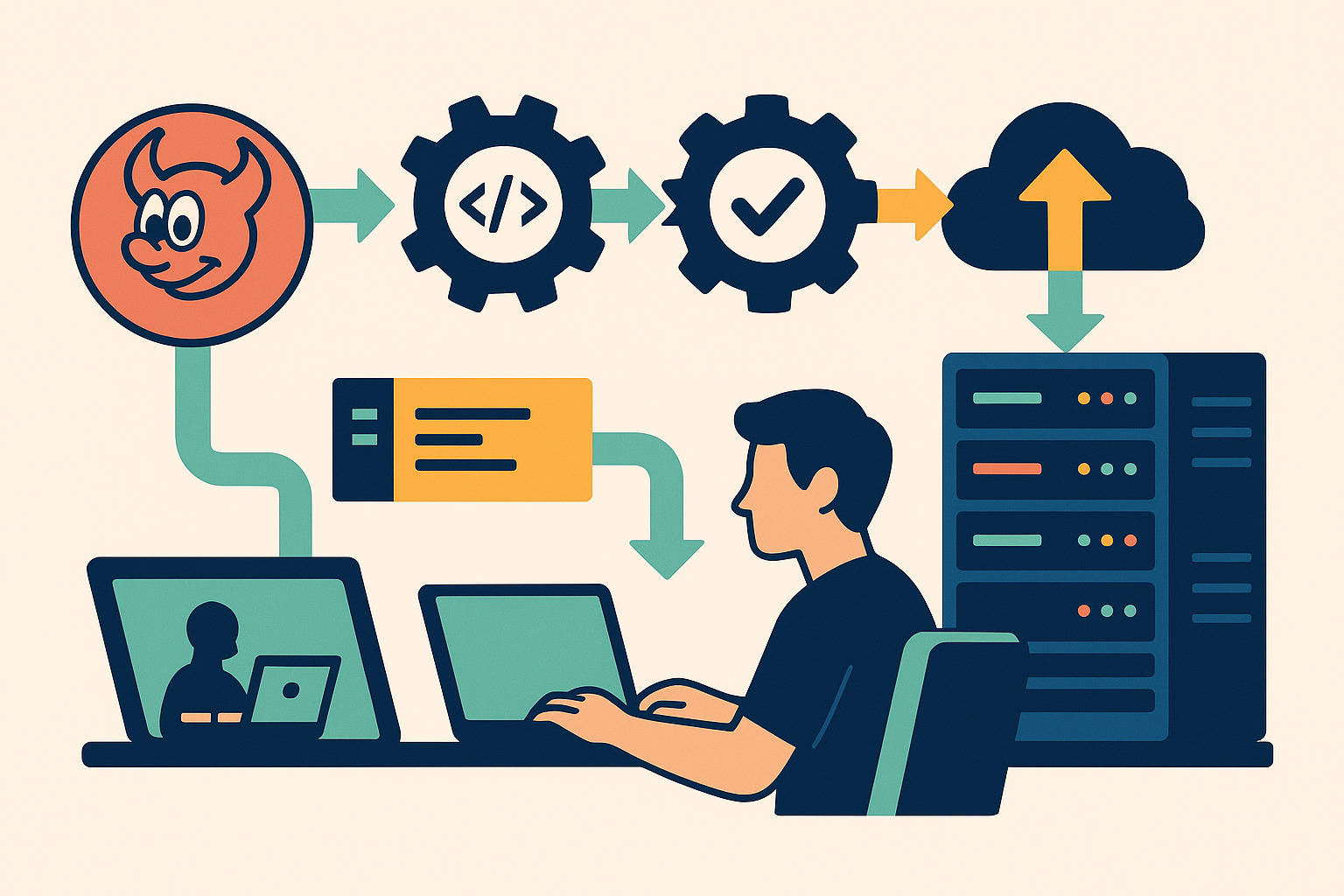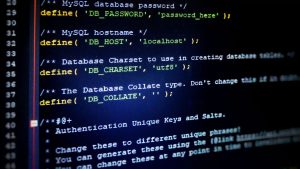Building Software Seamlessly on a Reliable System
A well-planned CI/CD pipeline keeps software development moving forward without delays. It helps catch bugs early, run automated tests, and deploy changes in a smooth, repeatable way. For developers who value control and performance, learning how to set up a BSD-based CI/CD pipeline for developers provides a stable and secure foundation for automation. BSD offers a dependable base to build these pipelines with precision and efficiency.
Unlike more common Linux setups, BSD systems provide a clean environment with a focus on security and system clarity. Developers who choose BSD often appreciate its precise control over system services and dependencies. With the right tools, a BSD-based pipeline can support reliable builds from the first commit to production.
Using BSD in this way isn’t just about preference—it brings predictability to environments where reliability matters most. Whether hosting your own infrastructure or supporting an open-source team, setting up CI/CD on BSD gives you a platform that stays consistent, even under pressure.
Choosing the Right BSD Flavor for the Job
There are several BSD systems to choose from, including FreeBSD, OpenBSD, and NetBSD. Each has its own strengths, and the best fit depends on the development goals. When considering how to set up a BSD-based CI/CD pipeline for developers, FreeBSD is often selected for server-based pipelines because of its extensive package support and performance tuning options.
For those concerned about security from the ground up, OpenBSD might be worth considering. Its tight code audits and default configurations help reduce risk. NetBSD, while more lightweight, is flexible across many types of hardware, though it’s less common in automated pipelines.
FreeBSD is generally the most straightforward option for CI/CD use. It balances stability, speed, and tool availability. For a team setting up automated testing and deployment, it helps to start with something familiar and well-documented, especially if the team is already using ports and jails.
Installing Development Tools and Dependencies
The pipeline depends on having the right tools in place from the beginning. FreeBSD’s package manager, pkg, makes it easy to install what’s needed—like Git, Python, Node.js, or Docker-style container systems like Podman. Most of the usual developer utilities are available through ports or binary packages.
To keep things organized, developers often install tools inside isolated jails. These help separate build environments from the host system. For example, a Python test suite can run in its own jail without touching global paths or files.
Installing from ports also gives more control over build options. If your application has specific library versions or custom configurations, ports allow detailed customization. This kind of flexibility is a big reason BSD appeals to developers who want full control over how tools are built.
Setting Up a Git Repository for Continuous Integration
The heart of any CI/CD pipeline is a version-controlled codebase. Hosting a Git repository on BSD is simple with tools like Gitolite, Gitea, or GitLab (with adjustments). Once the repository is running, the next step is linking it to a CI trigger system.
Some developers use git hooks directly to run scripts when code is pushed. Others rely on external tools like Jenkins, Buildbot, or even Cron jobs that check for new commits and launch builds. BSD systems handle these workflows easily with service scripts and shell environments.
A developer might set up a pre-commit hook that runs unit tests locally before allowing a push. On the server side, the same code can trigger a test and deploy job after merging to the main branch. With Git in place, these workflows become easy to repeat and adjust.
Automating Builds with Jenkins on BSD
Jenkins is one of the most popular tools for automating build jobs, and it runs well on BSD with Java installed. After installing the Jenkins package, it can be configured to run as a service and accessed through a web interface.
Each project can have its own pipeline defined through Jenkins jobs. These jobs can clone the repository, run tests, build binaries, and even deploy code to staging or production systems. BSD’s system tools make it easy to monitor Jenkins’ health and performance.
Developers who use jails or chroot environments for isolation can assign each Jenkins job its own sandbox. This prevents build artifacts from spilling over and allows clean builds with fewer risks. On a shared system, this separation matters a lot.
Testing Code in Isolated Jails
BSD jails are a strong tool for maintaining clean environments. When testing code in a jail, there’s no risk of interfering with system libraries or processes. It also mirrors production setups where applications run in isolated containers or virtual environments.
To create a jail, tools like ezjail or bastille make setup quicker. Once configured, each jail acts like a mini-system. Scripts can install packages, fetch source code, and run tests just like on a standalone machine.
Using jails for CI is useful when testing multiple projects or branches. A fresh jail can be spun up for each run, ensuring that no stale data or leftover files affect the test results. After the job, the jail is destroyed, keeping the system lean.
Setting Up Deployment Hooks for Production Pushes
After tests pass, it’s time to move code into production. This step can also be automated through scripts or CI tools. Whether using rsync, scp, or more advanced container workflows, BSD systems handle them all with standard tools and shell scripts.
Some teams prefer a pull model, where the production server pulls updates from a staging repository. Others use push methods with pre-approved deployment scripts. Either way, BSD supports these workflows securely with SSH and minimal system overhead.
Before deploying, it’s smart to have rollback steps built into the process. For example, backing up the old release before pushing a new one allows quick recovery. BSD’s filesystem snapshots or ZFS features can help here, especially in high-availability systems.
Using Cron Jobs to Trigger Regular Builds
Not every CI/CD process is triggered by code pushes. Some teams prefer nightly or weekly builds to test stability over time. BSD’s built-in cron system works well for this, letting users schedule jobs with exact timing.
A typical setup might include a job that runs every night at 2 a.m. to clone the latest code, compile it, and run a full suite of tests. Logs are saved for later review, and alerts can be sent if something fails. This helps catch slow-growing issues before they reach users.
Using cron in this way allows background monitoring of long-term project health. It complements push-based CI by acting as a fallback in case triggers are missed or unexpected changes slip through during the day.
Monitoring Pipeline Health with Logging and Alerts
Logs are essential for keeping a CI/CD pipeline on track. Whether testing fails or deployments get stuck, logs show what happened and help fix the issue. BSD logs most system events by default in /var/log, and custom scripts can be set to log their own output.
For real-time awareness, alerts help catch problems early. Developers might set up email notices when builds fail or services crash. BSD’s mail command, along with tools like sendmail or postfix, make this easy to set up without outside services.
Some teams use external services to watch Jenkins jobs or server uptime. These tools can ping the server, test API responses, or watch for failed jobs. When combined with BSD’s reliability, these checks add confidence that the system is doing its job properly.
Keeping the Pipeline Clean and Maintainable
A CI/CD setup works best when it stays simple and clear. That means avoiding clutter, removing old logs, and keeping scripts well-documented. BSD systems support this kind of care with clear service controls, filesystem tools, and user permissions.
Regularly rotating logs, checking for failed jobs, and pruning stale jails can all be automated. Teams who clean up regularly avoid slowdown and confusion, especially on shared systems. Documentation of pipeline steps also helps new team members step in quickly when needed.
With a solid routine, a BSD-based CI/CD pipeline becomes dependable and easy to improve. It supports fast feedback, clean builds, and quick delivery—all while running on a platform known for its strength and simplicity. That’s why understanding how to set up a BSD-based CI/CD pipeline for developers is essential for teams that want long-term reliability and control.










No Responses